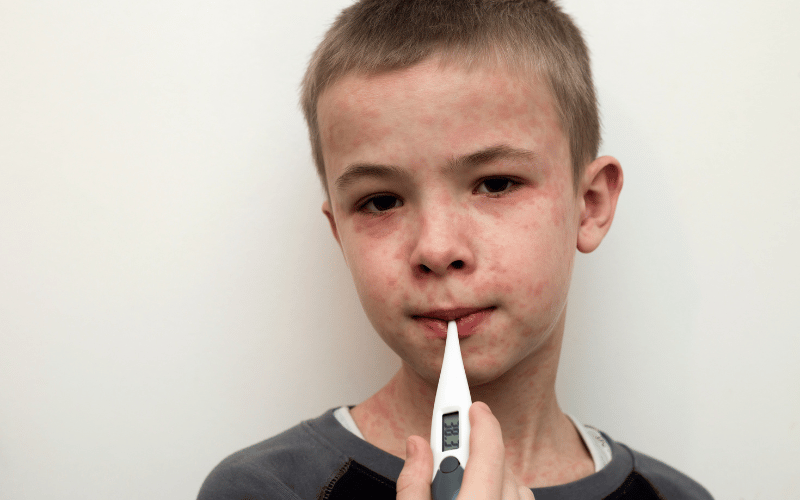Introduction: Navigating the Early Symptoms of Chickenpox
Chickenpox, a term that often brings back childhood memories of itchy, red spots and days spent at home, is caused by the varicella-zoster virus. Although it is more common among children, adults can contract it too, and the symptoms can be more severe.

The rash that appears is the most well-known symptom, but there are early signs that can help in identifying the disease before the rash develops. Recognizing these signs is essential, especially in today’s times when the vaccine has made chickenpox less common but also less expected.
The early symptoms of chickenpox can be easily mistaken for a common cold or flu. This is because the virus initially affects the respiratory system, leading to symptoms such as a mild fever, cough, and sore throat. These signs might seem benign at first, but paying close attention to them can lead to early diagnosis and treatment, reducing the risk of complications.
So, what should you look out for? The initial symptoms can include a combination of a sore throat, mild fever, and a feeling of general unease. As the virus progresses, these symptoms may intensify, and new signs may appear. It’s essential to keep in mind that chickenpox is highly contagious, and recognizing the symptoms early on can help in preventing its spread.
1. Fever – The Initial Herald of Chickenpox

When the varicella-zoster virus enters the body, it often announces its arrival with a mild fever. This initial symptom sets the stage for what’s to come, serving as a subtle warning sign of the infection. A fever, though common in many illnesses, takes on a unique pattern in the case of chickenpox.
In the initial phase, the body’s temperature might rise slightly, creating a sense of discomfort. The person affected may feel a bit warmer than usual, and this change, albeit small, is significant. It’s the body’s way of creating an inhospitable environment for the virus, an innate defense mechanism kicking into gear.
As the hours pass, the mild fever can fluctuate, sometimes easing up, giving a false sense of relief. But it’s important to stay vigilant. During this time, other symptoms might start to creep in, subtly at first. The person might experience chills or a feeling of being unusually cold, followed by episodes of sweating as the body tries to regulate its temperature.
This fever, while not severe, can linger, lasting for a couple of days before the more recognizable symptoms of chickenpox begin to appear. It’s a critical window of time, where paying attention to these subtle changes in the body can lead to early diagnosis and timely intervention. In the next stage, the fever may escalate, and additional signs become more evident, signaling the progression of the infection. (1)